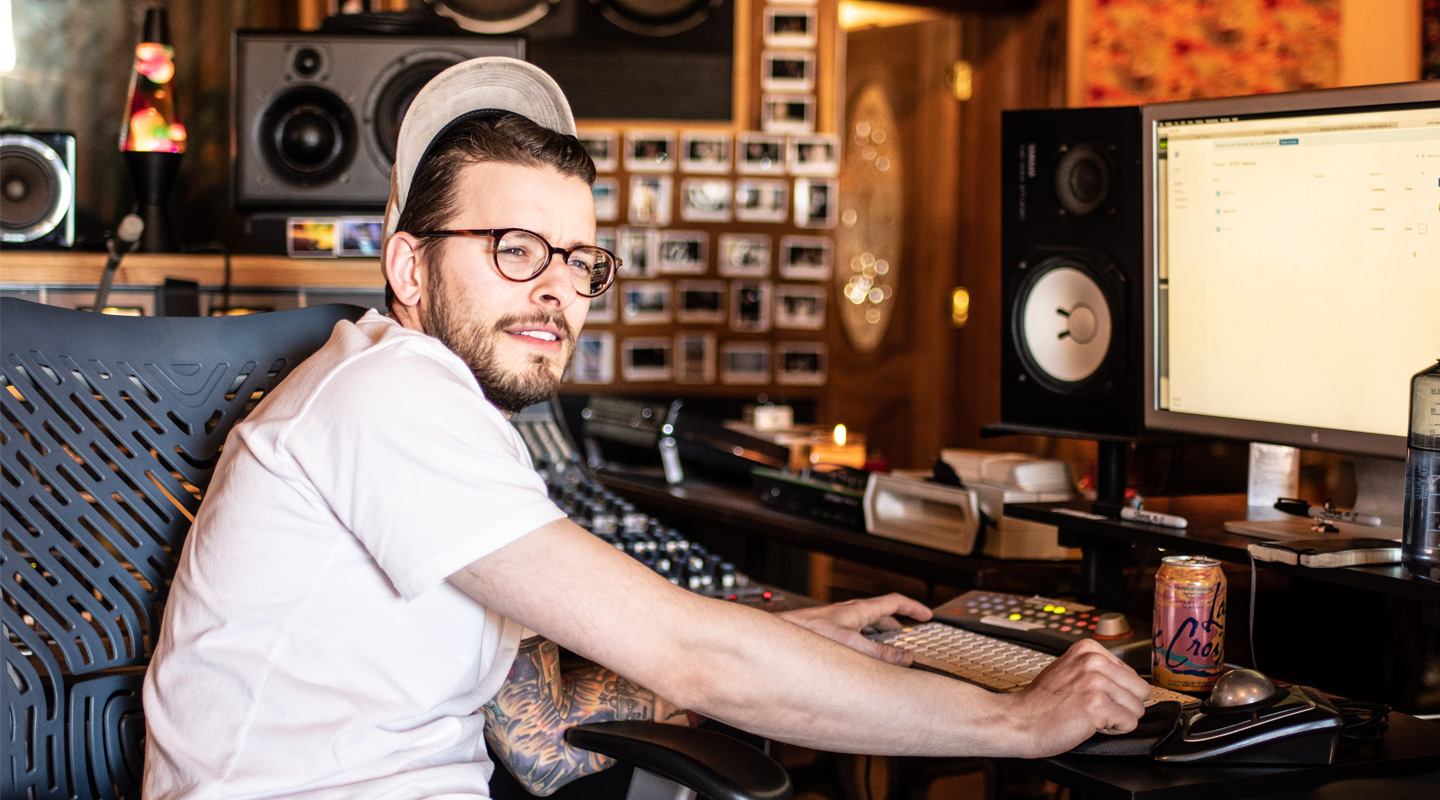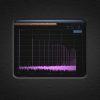
i For Detail: Recording Bon Iver
With I,I, Bon Iver’s Justin Vernon finds yet another way to tell a story. Co-producer Chris Messina and engineer Zach Hanson fill in the blanks.
Justin Vernon, leader of the alt-folk band Bon Iver, called their 2016 album 22, A Million, “a new way of telling a story.” It was an understatement. 22, A Million was as experimental as it’s possible to get (short of going atonal), with tons of distortion, drop-outs, and weird sonic artefacts. The combination of disorientating sonic weirdness, gorgeous melodies and crazy song titles proved enormously successful, both critically and commercially. 22, A Million was a major achievement, but, as is often the case with artistic high points, where could they go from there? Getting even weirder risked severing their connection with popular culture, while a more straight-up album might be considered a retreat.
The follow-up album, I,I, released in August, provides the answer. In many ways it is a return to more traditional songwriting, with longer tracks and more traditional song structures. It’s still awash with sonic experimentation but in this case the production weirdness is never so dramatic that it pushes the songs to break down, and Vernon’s voice sounds more natural and is more centre stage. With the novelty of the extreme production experimentation gone, reviews of I,I were slightly more mixed, while remaining overwhelmingly positive. One reviewer had it right when he called I,I “a moment of consolidation,” and concluded that the result is “a mature masterpiece and a stunning marriage of ambition and technique.”
Another interesting difference between I,I and its predecessor is that many of the performance and production credits on 22, A Million were deliberately obscure, with names like ‘Noble Black Eagle’, ‘Trust Ear’ and ‘Scream Defence’. The credits for I,I, in contrast, simply list Chris Messina, Brad Cook and Justin Vernon as co-producers, while everyone else gets instrument, writing and/or technical credits. While Messina was credited as the ‘Maker’s Maker’ on 22, A Million, on I,I he’s credited as playing keyboards on some tracks as well as being involved in production, engineering and mixing. Zach Hanson, who had the least cryptic credit on 22, A Million with ‘Professional Mixer,’ has straight engineering and mixing credits on I,I.
Via a Skype conversation from Eau Claire in Wisconsin, co-producer Messina and engineer Hanson gave some insights to the making of I,I, inevitably harking back to 22, A Million as the blueprint for the band’s current direction.
MAKING I,I
“There was no over-arching theme for the direction of the new album,” recalls Messina. “There was a larger emphasis on collaboration with various musicians and producers, but we did not set out to do something radically different. We weren’t saying, ‘the last record was too this or too that, let’s do something else.’ In fact, a couple of the songs on the new album, ‘iMi’ and ‘Faith,’ were from the 22, A Million sessions, and we simply continued from there. We simply went back into the studio after 22, A Million was released, and started messing around.”
“Justin’s voice is something we all agreed was going to be less fucked up this time. We realised there was an opportunity for Justin to say something much more clearly than he has in the past, and to speak less abstractly. That meant we were putting a lot of emphasis on lyrics and the sound of his voice, and it’s louder in these mixes than it has been previously. Those were conscious decisions. There are still places where his voice is messed up, but the effects are not as front and centre as before.”
About six years ago the first steps towards 22, A Million came out of Vernon hanging around depressed on a Greek island, manipulating a vocal sample on a Teenage Engineering OP-1 so it ended up sounding like ‘two-two’, and realising that his new direction was going to be about numbers and experimentation. This resulted in a lot of musical soul-searching that continued during three years of sessions at April Base, his studio in Eau Claire. With I,I things were very different, recalls Messina. “We were aware earlier on that we were actually making a record, and Justin was in a very different place mentally. There was more focus on confidence with the new album. That showed throughout the entire process of making I,I. We were very focused, and everything just made sense for the most part. We were never about being weird for the sake of it, so we didn’t feel that we had to repeat that. It was always about the emotional impact. The next record could be even weirder than 22, A Million, or it could be Justin and a guitar. There are no rules, we simply go for what comes together and works.”
APRIL BASE
Like for 22, A Million, the writing sessions for I,I took place at April Base. The importance of this location was illustrated by its ‘Producer’ credit on 22, A Million, which is almost certainly the first time a studio has received such a credit. Messina is the studio’s manager, and Vernon’s main sidekick. He first met Vernon when he worked for a live sound company called Eight Day Sound, based in Cleveland, and was a sound engineer for a Bon Iver tour. The two became friends. Vernon invited Messina to visit his studio; Messina moved from New York to Wisconsin in 2011.
“At the time, the studio was just a Pro Tools rig and some Teletronix LA2A compressors, Neve 1073 mic preamps, and a few microphones. Justin said to me, ‘do whatever you want to turn this place into a proper studio.’ We started with Studio A, which was the original space; it’s been through five different iterations now. Over the years we’ve had tons of different gear coming in and out, including a Trident 80C desk and a Studer A827. We eventually decided to build a second studio, Studio B, which has an SSL Duality desk. We’ve also built several live rooms. The two studios and their live rooms ended up being totally tied together. Most of the writing sessions for I,I took place in the live room of Studio A and the control room of Studio B. Currently, the entire studio has been emptied for renovation; in anticipation of the renovations, we sold the Trident during the making of I,I and emptied the control room of Studio A. All the outboard from that studio started piling up in Studio B; it was totally nuts!”
According to Messina, the core team that worked at April Base was Justin Vernon, Brad Cook, Messina, producer BJ Burton, and Zach Hanson. Members of the live band regularly came in, as well as violinist and arranger Rob Moose – who also did the arrangements for the Worm Crew, a five-piece horn band plus harmonica player. More than 30 other musicians are listed in the credits for I,I including luminaries like James Blake and Bruce Hornsby.
The various musicians, engineers and producers present at April Base played their instruments and messed with the enormous amount of gear there. One piece of kit that stands out in particular is the ‘Messina’, obviously named after Messina himself. It was the most prominent vocal effect on 22, A Million¸ and some reviewers misinterpreted it as simply AutoTune. According to Messina, his namesake is used more sparingly on I,I but is still an important feature.
We were never about being weird for the sake of it... It was always about the emotional impact.
MESSIN’ WITH MESSINA
The Messina was inspired by software designed by Francis Starlite (of Francis & The Lights) called the ‘Prismizer’, that can make one instrument sound like many. “Francis stayed at Justin’s house for a year,” recalls Messina. “Inspired by what he did, Justin and I tried every vocoder we could find but it always sounded like a vocoder. Instead, we wanted to keep the character of whatever input signal we used. We ended up sending a signal to Ableton Live and treating it with two instances of AutoTune. The first one tunes the vocal, the second creates a single note that is the tonic of whatever phrase is sung or played. That tonic note is sent to an Eventide H8000, which we set to a Midi-controlled harmony program. Justin plays a Midi keyboard and the H8000 receives what he plays along with the tonic note from AutoTune, and generates up to four notes that are, to some degree, random. The final Messina sound is a combination of the dry signal, the tuned signal, the tonic note, and the harmonies created by the H8000.”
“On 22, A Million you can hear Justin on his own with the Messina on the track ‘715.’ On the new album the chordal information in the tracks ‘Holyfields’ and ‘Jelmore’ is from the Messina. On ‘Holyfields’ it was a bit of a process: we were messing with an EML Electrocomp 101 (an early ‘70s patchable synth) for five or so minutes, and then Brad started playing different octaves of D on a Yamaha Reface CS synth and looping them. We sent the loop to the Messina, and set up gates that were triggered by the EML so that everything was pulsing along with the EML. ‘Holyfields’ ended up being almost entirely one take; Justin sang on it immediately afterwards. For ‘Jelmore’ we had a similar process, but with a weird loop of one note created on a Jupiter 8 as its basis. It was really distorted; we looped it with long crossfades, so there’s a lot of movement, and then sent it to the Messina which was being played by Buddy Ross. We sent that to a Lexicon 480, and gated the return of the 480 with a prepared trumpet and also an Folktek Modified Omnichord to make it react in a really bizarre way.”
It’s obvious from the above that messing with hardware is what turns Vernon and his fellow sonic travellers on. This extended to using a desk and outboard, as Zach Hanson explains, “Justin finds more inspiration in instruments and outboard that make a crazy sound, rather than throwing on a plugin. I would say that probably the most important gear addition for this album was that we got two Eric Valentine Undertone UnFairchild compressors. They are insane. We used them on Justin’s vocals, and we also had one on the mix bus.”
SONIC RANCH
The sonic journeys undertaken by Vernon and Co also included a physical journey, from April Base to Sonic Ranch in Texas. The latter bills itself as ‘the world’s largest residential studio.’ Messina: “Apart from the UnFairchild, probably the biggest other change with this album was that we went to another studio to finish it. The huge renovation we had planned for April Base started in January of this year, so we had to move elsewhere. We were in Sonic Ranch for six weeks during February and March, and we took over almost the whole place! We were using five of their six studios for the whole time we were there. Zach and I were mixing in one studio, which was called ‘Adobe’. Justin set up in a small studio by himself to do vocals and work on lyrics. The band was in two tracking studios. We were also scoring a film and had set up a studio just for that. We brought in a truck full of our own gear – mostly the weirder stuff that other studios don’t have, because Sonic Ranch has more of the staples than you’d ever need!”
“By the time we arrived at Sonic Ranch the songs were in a recognisably finished state, apart from one or two tunes. Justin finished all the lyrics and his vocals at Sonic Ranch. Musicians and producers came in for a few days to a couple of weeks, adding finishing touches or sometimes coming up with new things. There was a lot of hanging out!”
“One recording that we’d been struggling with for six years consisted of Justin and his best friend Trever Hagen messing with a radio in a barn. That radio had been there for a long time, and they just turned up whatever was on it. While they were doing that, they were also sliding pieces of cardboard across the dirty concrete floor in the barn, and recording everything on an Android phone of some kind. That sample had been at the core of a track we called ‘Barn’ for years, and we’d been trying all of that time to turn it into a song. It was in that place where you love it but then you hate it, you’re excited by it but then you’re frustrated by it. Andrew Sarlo, a producer, came to Sonic Ranch to work with us, heard ‘Barn’ and said he wanted to mess with it. We heard enough in what he had done to offer us a new way to finish the song. It’s like he had created the first chip in this huge wall that we’d been staring at for years; after that we quickly blasted through it. The sample is the opening track of the album, ‘Yi,’ and it runs into the tracks ‘iMi’ and ‘We’.”
RECORDING VOCALS & MORE…
Zach Hanson has worked regularly at April Base as an engineer and mixer since 2012, when he met Vernon while working as the drum tech for Sean Carey (Bon Iver’s drummer). At April Base he mixed The Staves’ EP If I Was (2014) and album Sleeping In A Car (2015). Both releases were produced by Vernon, who was so satisfied that he offered Hanson the job of mixing 22, A Million. Hanson was involved from the beginning with I,I, recording several of the sessions and then mixing the entire album with Chris Messina.
Hanson and Messina discussed some of the recording signal chains, beginning with Vernon’s voice. Messina: “We generally default to the Sony C37 because he just sounds incredible on that mic.” Hanson: “In some cases we used the Shure SM7 because Justin is super familiar with it. Sonic Ranch had a Neumann U47 that we’d set up to record guitars, but when Vernon sang into it we were like, ‘wait a minute, that sounds great!’ There were a few songs on which we tried both the C37 and the U47, and his voice sounded insane on both of them. So we ended up using those two mics the most. The signal chain was the mic into a Neve 1073 preamp, and then the UnFairchild.”
Messina: “We also often used an AMS RMX16 reverb, plus the Hawk HE-2250 stereo tape delay. It’s a Japanese consumer product from the ‘70s, and it sounds ridiculously cool. It has a really pure sound; we fell in love with it and used it on many things. It’s used on vocals a lot, but it’s all over the album.”
“We recorded Justin’s acoustic guitar with a U47 mostly through a Neve 1073 but sometimes direct into the Neve 8088 desk at Sonic Ranch. Keyboards generally were straight in. At April Base we have many Phoenix DI boxes. They make an eight-channel rack-mounted DI that sounds fantastic. From there we often went into a 1073.”
Hanson: “I recorded the Worm Crew at April Base, live, with everybody in the room. There was a saxophone, clarinet, bass clarinet, two trombones, a trumpet or French horn, and the harmonica. I had spot mics on each individual performer and then a stereo room set-up using two Flea 49 mics, maybe 20 feet away from them, pretty high up. I also had two Flea C12 mics as a close stereo pair, and a ribbon AEA R88 as well. ‘Marion’ was a live take with Justin playing guitar and singing with the Worm Crew playing, all of them in the same room. We usually don’t want spill, but we certainly didn’t mind it in that scenario – in fact, spill was the purpose!”
MIXING
As is common in these days of working with DAWs, Messina and Hanson mixed the sessions as they were recording. But, asserts Messina, “We had a final mix stage in Texas. The way things were structured is that Zach, Brad, Justin and I arrived 10 days before everyone else to work on the sessions. Then all the musicians and producers showed up for a couple of weeks, and then we had another 10 days during which we finished everything. Zach and I mixed, but the others had a lot of input. Once again, there was a lot of hanging out!” [laughs]
“The final mixes usually involved Zach doing cleanup, getting rid of all the pops and clicks and getting all the tracks in order. We mixed through the 40-channel Neve 8088 desk at Sonic Ranch, so while the sessions stayed more or less the same in Pro Tools, we created stems and assigned outputs. All the detailed nit-picking changes happened in-the-box, as did the automation – mostly using clip gain. Although the Neve desk has Flying Faders, we only used it to take snapshots of each song, not for automation.”
There’s still a lot of romance attached to mixing on a desk, but as anyone honest enough will admit, it’s a challenge. It’s much easier to load up a session in Pro Tools, so why mix on a desk in 2019? “It was mostly for the sound of the desk,” replies Hanson. “That became apparent almost immediately. Signals such as a piano recording that we’d been hearing for a couple of years suddenly had so much more energy and warmth when sent through the desk. It was mind-blowing for Chris and I. We were like: ‘Holy smokes! This actually does make things sound better!’ Hearing things come back sounding more alive and interesting was really exciting.”

































So good to hear and read this info. Hats off to you guys for organising this, it’s really amazing to be able to get all of this insight into I Comma I 🙂
I’d would love to have known what mic(s) Rob Moose used for recording strings, particularly on Holyfields ! 🙂
Goodmorning, I’m using Apple Mac Air 2020 lab top and Apollo Twin X interface but its not connecting. I getting cannot use thunderbolt accessory plus its not finding device. I’m using a dongle and usb c cable as requested. I upgrade my Mac air with Big Sur 11.1. Not sure what’s going on here Please help.
Goodmorning, I’m using Apple Mac Air 2017 laB top and no Apollo Twin interface but its cool. I met Justin once in Minneapolis cool dude. I dont have a usb c dongle though